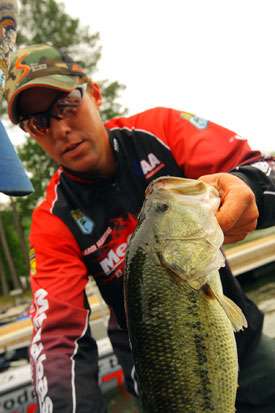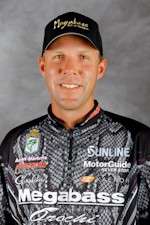
In this lesson I want to talk about crankbait efficiency. Note that I did not say organization. That's because there's more to being efficient with crankbaits than simply putting them in the right box and keeping that box handy.
The first thing we need to think about is the manufacturer. Each company makes baits that have a set of unique characteristics — size and shape, running depth, wiggle frequency and rattles, to name just a few of them.
For instance, a Norman bait and a Lucky Craft bait may look similar to you, but they'll perform very differently in the water. And make no mistake about it, the fish see and feel that performance difference. Sometimes that difference means a full sack rather than an empty one.
That's why I start by sorting my crankbaits according to the manufacturer. I put all my baits that are made by one company together. That way I know I have the same general characteristics, regardless of whether I'm fishing with a shallow runner or a deep runner.
Once I get them sorted that way, I break them down by running depth, then size and finally by color. That's the way I choose a bait to fish with, so that's how I want them sorted in the boxes in my boat. When I'm done, I probably have eight or 10 Plano boxes full.
I store the lures in my boat in different places depending upon how I'm fishing. If I'm practicing and know I'm on a crankbait lake or river, I'll put them all together in the center of my boat. I can reach them in just a few seconds.
I might have all the Norman stuff stored in the lower left part of the locker, and maybe the Lucky Craft stuff in the upper right with the others in the other two corners. That way I can find what I want really quick. Most of the time I can grab what I want without even looking at anything. Time is efficiency on the water. Every minute you save is another cast, and maybe another fish.
If I'm fishing an actual tournament, I'll sort them differently. The ones I think I'll be using will be in the center compartments of my boat. The ones I don't think I'll be using at all will be stored in the front compartments. And the ones I might use will be in the back of the boat. That's the most efficient way to do it, for me at least.
There are a couple of other things I want to mention that are important with crankbaits. The first is to keep your crankbaits clean. There's an easy way to do that. Wash them off in the water as soon as you're done. Most of the algae, green stuff and mud will come off real easy if you don't let it dry on them.
The other thing is to make sure they're dry before you put them in the appropriate Plano box. I usually just lay mine on the deck of the boat for a few hours and put them away when I get back to the dock. If it's raining, it gets more complicated. You'll have to leave them out until the rain stops. If you can't do that, take them back to your house or motel room.
If you do get a little rust on one — sometimes that's almost impossible to avoid — you can get it off by rubbing it with WD-40. (Never leave rust on a crankbait. The fish won't bite it. I don't know why, but they won't.)
Next time we'll talk about plastics and sinkers. I have a few tips that'll save you money and time.





